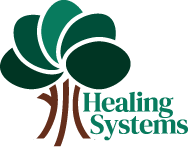Systems and Policies
Systems including health care, education, and criminal justice have a big influence on peoples’ lives. Systems affect both communities and individuals. They can be helpful, harmful, or somewhere in the middle. Systems that are healing support positive health and well-being. Systems that are not healing can (and often, do) cause harm to individuals and communities.
What is a system?
A system is a group of parts connected for a bigger purpose.
Example: A school–teachers and students working together on learning.
Connections between the parts of the system will affect the whole.
How a teacher treats a student affects the whole class.
The whole class affects each student.
Since it is all connected, we must consider how small changes can affect everyone.
Systems change is...
A lens for thinking
Shifting your mindset to a new way to see complicated problems.
An Organizing Tactic
A process of bringing together everyone involved with a problem to address it.
A Strategic Approach from Leadership
Large-scale or transformational change that occurs as a result of changing the conditions that cause a problem or allow it to persist.
Conditions are practices, policies, resource allocation, mindsets, etc.
Systems do not develop or exist in a vacuum. They are influenced by history and are created and maintained by people. One way that people influence systems is through developing and implementing policies.
A policy is a law, regulation, or procedure of governments and other institutions. Policy decisions are often influenced by what resources are available to support them.
Please see the table below to learn about policies that are harmful and helpful and the systems they operate within.
System
Harmful Policies
Healing Policies
Justice
Money Bail: The cash bail system allows wealthier people to be released from jail while awaiting trial, but forces people who cannot afford bail to await their trial in jail.
3 Strikes Law: Committing a serious or violent felony and additional crimes results in the person receiving harsh incarceration sentences.
Supervised Release: Provides pretrial supervision and voluntary social services to people charged with a crime.
Alternatives to Incarceration: People can receive punishments other than incarceration, including restorative justice, when they commit a crime.
School/Education
Exclusionary Discipline in Schools: A form of punishment that includes suspension or expulsion from school, which is associated with more negative life outcomes for youth.
Restorative Justice: Emphasizes correction and counseling over punishment and focuses on using collaboration and open dialogue to resolve conflicts.
Health Care
Family and Medical Leave Act: Requires eligible employers to provide their employees with unpaid leave, a policy which favors wealthier people.
National Paid Family Parental Leave: A federal law mandating paid parental and family leave for new parents or caregivers is more equitable.
Housing
Exclusionary Zoning Laws: Zoning laws that restrict the types of houses that can be built in neighborhoods contribute to the racial wealth gap.
Inclusionary Zoning Policies: Regulations or incentives for developers to include low- or moderate-income housing in new developments improves equity. For an example, see Minneapolis’s comprehensive plan, Minneapolis 2040.
Transportation
Access to Public Transit: In Baltimore, MD, there are racial disparities in access to public transit.
Central Maryland Regional Transit Plan: This plan enhances transit services through faster and more reliable service that increases access to jobs and opportunities.
Climate/Environment
Air Pollution: In the UK, it is estimated that 5% of deaths are due to air pollution. There are racial disparities in the number of deaths related to air pollution.
Clean Air Human Rights Bill (also known as Ella’s Law): Establishes the right to clean air as a basic human right. The bill limits the number of pollutants present in the air.
